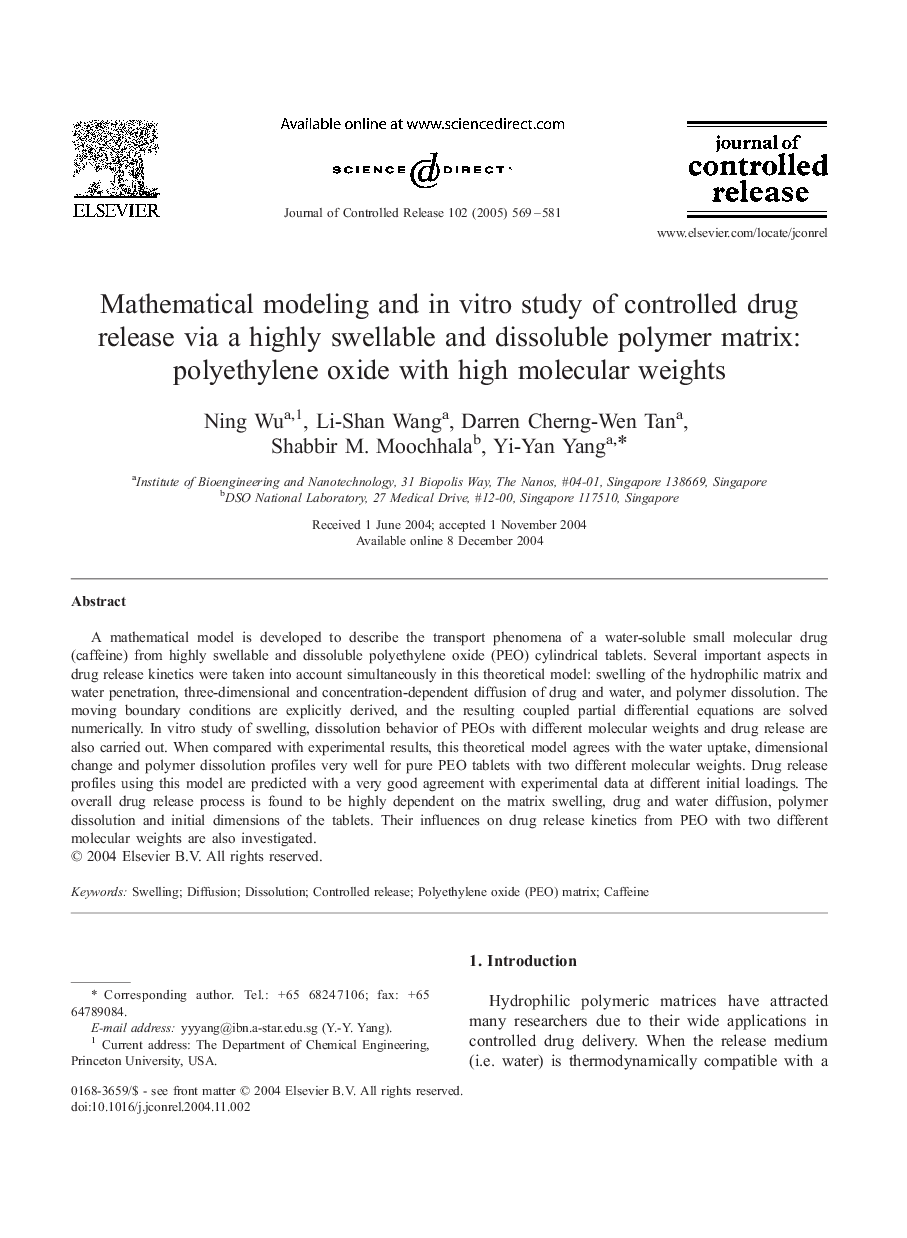| Article ID | Journal | Published Year | Pages | File Type |
|---|---|---|---|---|
| 10613449 | Journal of Controlled Release | 2005 | 13 Pages |
Abstract
A mathematical model is developed to describe the transport phenomena of a water-soluble small molecular drug (caffeine) from highly swellable and dissoluble polyethylene oxide (PEO) cylindrical tablets. Several important aspects in drug release kinetics were taken into account simultaneously in this theoretical model: swelling of the hydrophilic matrix and water penetration, three-dimensional and concentration-dependent diffusion of drug and water, and polymer dissolution. The moving boundary conditions are explicitly derived, and the resulting coupled partial differential equations are solved numerically. In vitro study of swelling, dissolution behavior of PEOs with different molecular weights and drug release are also carried out. When compared with experimental results, this theoretical model agrees with the water uptake, dimensional change and polymer dissolution profiles very well for pure PEO tablets with two different molecular weights. Drug release profiles using this model are predicted with a very good agreement with experimental data at different initial loadings. The overall drug release process is found to be highly dependent on the matrix swelling, drug and water diffusion, polymer dissolution and initial dimensions of the tablets. Their influences on drug release kinetics from PEO with two different molecular weights are also investigated.
Related Topics
Physical Sciences and Engineering
Materials Science
Biomaterials
Authors
Ning Wu, Li-Shan Wang, Darren Cherng-Wen Tan, Shabbir M. Moochhala, Yi-Yan Yang,
